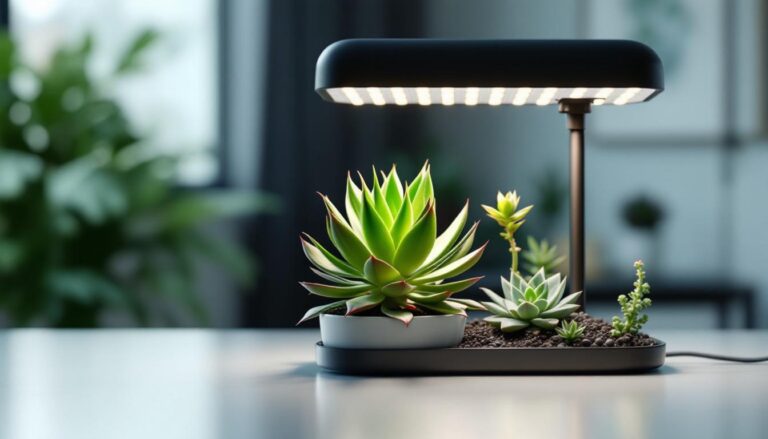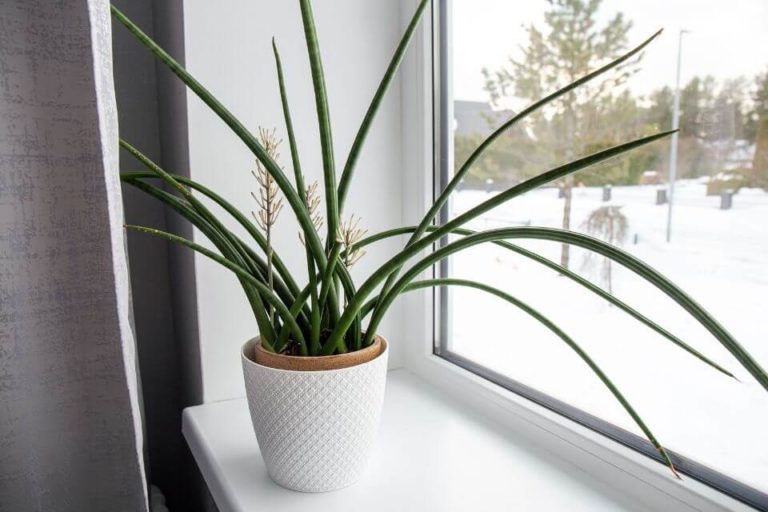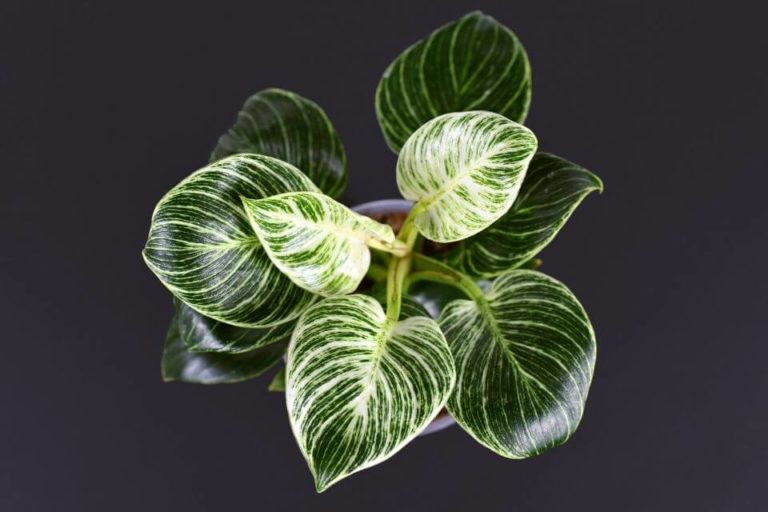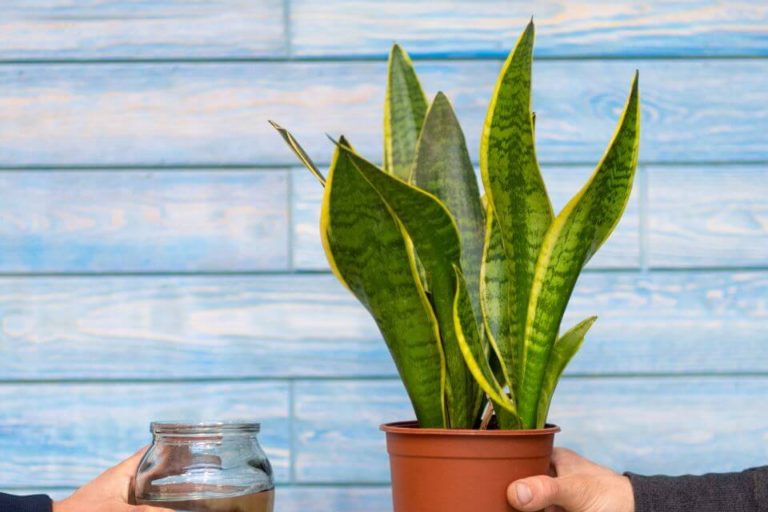Calathea Orbifolia Care 101 – Planting, Pruning, And Propagating Guide
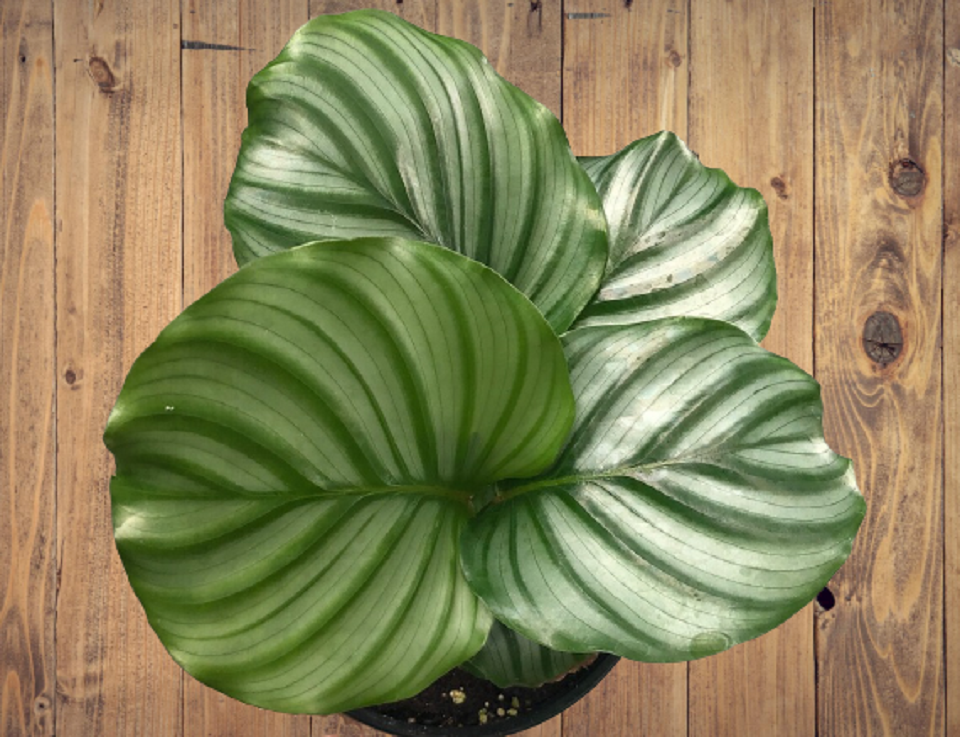
Calathea Orbifolia is one of the most common and easy Calathea varieties that are available to keep indoors. Its large, showy, and beautiful leaves are one of the reasons they are so popular as houseplants.
In addition, there are enormous, silvery-green leaves with dark veins on Calathea Orbifolia plants, Calathea species do well in the home, but there are a few things to consider when caring for them.
This Calathea Orbifolia Care article will wrap up everything you need to know about to take care of this as an indoor plant.
| Highlights: | |
|---|---|
| Common Names: | Calathea Orbifolia, Prayer Plant, Round-leaf Plant |
| Botanical Name: | Calathea Orbifolia |
| Plant Family: | Marantaceae |
| Plant Type: | Tropical perennial |
| Origin/Native: | Native to Bolivia |
| Care Level: | Easy |
| Grow Zone: | 9b - 11 (USDA Hardiness Zone) |
| Size: | Up to 3 feet in height and about 1.5 feet in width |
| Soil Requirement: | Light and well-draining soil with low pH levels |
| Water Requirement: | Medium moisture levels |
| Sun/Lighting: | No direct sunlight, but require bright light |
| Temperature Req: | 65° - 75 °F (18°C – 24°C) |
| Propagation: | Root division |
| Toxicity: | Non-toxic to animals and humans |
| Flowering/Color: | White-colored flower |
| Uses: | House plant for decorative purposes and air purification when planted indoors |
TABLE OF CONTENTS
Overview of the Calathea Orbifolia Plant
Orbifolia, a big Calathea variety from South America, is prized for its crisp, designer-quality leaf. Oval leaves up to a foot wide make this a traditional showstopper.
This plant is sometimes referred to as Goeppertia Orbifolia, which is the botanical synonym for the same. Like other varieties in the Calathea genus, Calathes Orbifolia can be finicky.
Many people fall in love with this plant because of its appealing leaf and well-balanced profile, but some of them are sorry to watch as the plant progressively degenerates and fades away.
Why? Because it’s not enough to adore. To survive, the Orbifolias need a constant supply of dampness and soil moisture. It is common for Orbifolia owners to exaggerate how easy it is to care for their plants in a tropical climate.
You’re at a disadvantage if your house doesn’t have any standing water. A Calathea Orbifolia, on the other hand, is not to be feared but rather understood.
You’ll both be delighted if you give it jungle-like circumstances that include warmth and dampness. You are more likely to be at risk from them if they eat it than they are from it.
Calathea Orbifolia might be difficult to track down, but that’s changing as word of mouth spreads about how wonderful they are.
Appearance, Size, and Growth
If you’re looking for a bold and gorgeous houseplant, Calathea Orbifolia would be the best choice among many houseplants. A common Calathea has dark green leaves with scalloped edges and silver brushmarks on the top.
Calathea Orbifolia is one of several variants of the plant. There is a gorgeous ruby-purple color behind the leaves. A three-foot-tall and three-foot-wide indoor version of the plant is possible.
There is a good chance that you don’t imagine things when you see the plant in question. The Orbifolia’s leaves constantly move throughout the day because it is a praying plant.
Calathea Orbifolias can be cultivated outside in USDA Zones 9B and 11, where they are great houseplants.
It can be left outdoors throughout the summer and brought indoors in the fall, but it can’t withstand even a few minutes of freezing weather without being damaged.
However, it’s never a quick grower and falls into semi-dormancy throughout the cooler months. Rhizome roots make the Orbifolia susceptible to decay. It prefers a well-drained, rich soil mix, although it isn’t tolerant of soil that is too dry.

Calathea Orbifolia Care
Temperatures between 65°F and 75°F (18°C and 24°C) are ideal for Calathea Orbifolia when it is grown indoors. Water when the top 1″ to 2″ (2.5 – 5 cm) of soil dries out in well-draining potting soil. During the growing season, fertilize once a month.
Calathea Orbifolia is one of the flowering plants from the Marantaceae family. They are indigenous to the tropical woods of Central and South America and Asia and Africa, where they thrive.
It’s common to see these plants outside, where they’ll thrive in the shade and humidity of the forest floor. Watering, ample indirect light, and well-draining soil are the essential care requirements for this plant.
If you do it correctly, your Calathea Orbifolia houseplant will not only survive but thrive.
Medium to low light conditions with partial shade are ideal for your Calathea Orbifolia. If you can read comfortably without straining your eyes, the light is appropriate. If the light is too bright, the leaves will begin to fade, and they may even die.
Though they can tolerate low light, Calatheas aren’t known as “dark-loving” plants. They’ll thrive on a windowsill with a north or east exposure. Make sure you’re not directly in front of the window in rooms that face south or west.
Bright indirect light is ideal for growing other Calathas, such as the Calathea Medallion and the Calathea Ornament.
– The Soil Requirement
Calathea Orbifolia grows well in well-drained potting soil with plenty of nutrients. The soil moisture should be retained, but it should never get excessively wet.
Just mix 50% regular Potting Soil with 20% Orchid Bark, 10% Perlite, and 20% Charcoal the most important constituents in the best Calathea potting mix.
Drainage is provided by perlite and organic debris. Peat-based soil provides Calatheas with the nutrients they need to grow. Growers that use this type of organically-rich medium are better off than those who use chemical fertilizers.
As time passes, peat may get compacted; therefore, you should always make sure that water can flow freely through it.
In order to improve drainage, perlite or pumice are preferable soil additives to vermiculite. Vermiculite, despite being a natural substance, tends to retain too much moisture. As a result, root rot can occur if the soil or roots become excessively wet.
– Calathea Orbifolia Watering
As soon as the soil on the top of the plant begins to dry out, you should water the Calathea Orbifolia. To avoid overwatering your houseplant, adopt this strategy. When watering your Orbifolia plant, feel the soil for moisture content.
If you see any signs of wetness, you should wait to water; water only when the soil is dried. Despite its lack of drought-resistant qualities, the Orbifolia plant is more resilient when it comes to overwatering.
The plant may need to be watered once a week or even more regularly in the summer.
When it comes to Calathea Orbifolia maintenance, the most typical mistake is not watering the plant regularly. As a result, the soil will be dried excessively. Soil moisture levels should always be maintained as a guide for watering.
Rinse out any excess water by soaking the soil until you see water dripping out of the bottom holes of the container. Before placing the pot back on the drip tray, make sure all the water has evaporated.
Keep a close eye on the saucer to make sure the pot doesn’t become submerged in water. Calathea Orbifolia plants need water more frequently in the summer than in the winter is an excellent habit to get into.
Warm weather speeds up the evaporation of water. The leaves may need more misting than watering in the winter. Humidity is a must for Calatheas, and central heating can lead to dry air.
– Lighting
It is crucial to keep Orbifolias away from direct sunlight because they thrive in bright forest shade. Direct sunlight can cause their leaves to deteriorate and perhaps cause them to die.
Although you should avoid dim settings, they perform best in medium or lower light. If you can comfortably read in the light, you know it’s adequate.
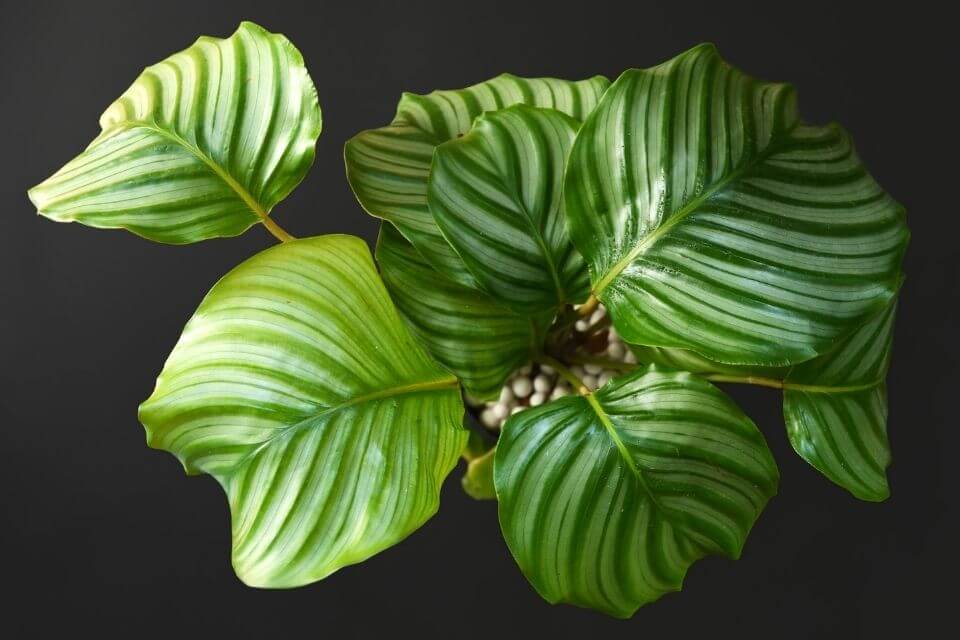
– Range of Temperature levels
Temperature is an important factor in growing Calathea Orbifolia houseplants inside, and while they prefer a north-facing window, they can accept some light from an eastern exposure in the morning.
If you keep your tropical plant’s temperature between 65°F and 75°F (18°C – 24°C), it should thrive. The leaves will begin to curl if the temperature is too high. Leaves will drop if there are low-temperature levels.
In order to successfully grow Calatheas inside, sufficient care must be taken during the summer and winter months. They are particularly vulnerable to abrupt temperature fluctuations in Calatheas.
It’s important that you keep your pets from being exposed to chilly drafts, such as air conditioning or open windows.
Keep the Orbifolia plant pot away from radiators in the winter. In the summer, Calathea Orbifolia plants can be grown in containers outside of the house.
As long as the temperature doesn’t go below 60 degrees Fahrenheit, you can grow a potted tropical plant in your backyard. Avoid direct sunlight and water your plant only when the top layer of soil is dry.
– Requirements for Humidity
Leaf plants like Calathea Orbifolia, which are native to tropical regions, require humidity levels of at least 50% at all times. Calatheas can’t thrive in dry environments, which is common in most homes in non-tropical regions.
To keep your Orbifolia plant happy, you’ll need to spritz the leaves, put them in a pebble water tray, or use a room humidifier. Calatheas should be placed in a bathroom or kitchen that is well-lit.
Shower plants do well in bathrooms and kitchens because of the damp air and filtered light they receive. Calatheas need a lot of attention when it comes to humidity.
Filtered water or distilled water should only be used to mist the leaf’s broad, shining surface. To get the greatest effects, sprinkle the big leaves with a fine mist every other morning. Once a week, use a moist cloth to wipe the leaves.
Calathea Orbifolia leaves benefit from both the moisture and dust-removing properties of this method. Once the stones are in place, pour water until it comes halfway up the rocks, making a pebble tray.
Make sure that the leaves of the Calathea are kept moist by putting the pot on the pebbles or a humidifier for the room. If you have a lot of tropical house plants, a humidifier for the room might help regulate the humidity.
Plants emit moisture through a process known as transpiration, which is why they should be grouped together. By grouping your plants, you’re increasing the humidity in which they can grow.
– Calathea Orbifolia Fertilization
It is not necessary to feed Calathea plants much. Minerals and nutrients required by your Orbifolia plant can be supplied by monthly light fertilization during the growing season.
Use a quarter-strength solution of organic houseplant feed. Fall and winter are the best times to cut back on feeding. A balanced houseplant fertilizer is best for Calathea Orbifolia.
The soil should be flushed on a regular basis, however. Orbifolia roots can be damaged by too much fertilizer in the soil. A buildup of extra minerals can be avoided by giving the soil a good soaking between feedings.
– Calathea Orbifolia Pruning
Pruning isn’t necessary for Calathea Orbifolia plants because of their compact growth habit. The thick foliage is made up of stems with a single leaf. As a result, the sole reason to prune Calatheas is to remove any dead leaves for aesthetic purposes.
It is also possible to remove old, yellowing leaves by pruning Orbifolia plants that will not hurt the growth of your plant.
– Re-Potting Quick Guide
Repotting your Orbifolia every two years should be sufficient. When it comes to repotted plants, it’s best to keep Calathea Orbifolia in its current pot.
This plant can benefit from being repotted in a larger container because it allows you to change out the potting soil and inspect the roots for any signs of decay.
In order to avoid damaging the roots when repotting Calathea plants, you must be careful not to disturb them too much.
Orbifolias can be replanted as follows:
- Add around 2″ (5 cm) to the size of the current pot.
- Check the roots for decay by removing the root ball and looking for brown or mushy roots.
- Using Calathea potting soil that is half-full place the plant in the new container.
- Soil the remaining area with a light layer of dirt.
- The Orbifolia should be watered thoroughly and placed in a warm, shady location.
- Propagation and Tips
Challenges arise in the process of propagation of indoor Orbifolia plants. Cuttings and root division of Calathea are famously difficult and rarely successful.
Rhizome division is the simplest way of Calathea propagation among the several strategies.
When Orbifolia plants are disturbed, they experience stress. The plant could die if you don’t divide the roots correctly. Spring is the optimum season to propagate a healthy Calathea Orbifolia.
It can be reproduced using the following procedure:
- Excess soil should be removed from the roots, and the root ball should be gently lifted out of the pot.
- Slicing a piece of tuber with at least one stem and leaf is necessary for this procedure.
- Good potting media should be used.
- Every day, spray the new plants in a warm, bright location.
Uses of the Calathea Orbifolia Plant
When it comes to office design, the Calathea plant is one of the most commonly used plants. It’s common in both private residences and commercial establishments.
Indoor use and business buildings will benefit significantly from their preference for indirect lighting. Calathea plants are famous for indoor use since they are easy to care for and look fabulous, providing vibrant green plants to spruce up drab interiors.
Calathea Orbifolia Common Diseases
It’s not uncommon for Orbifolias to succumb to fungus, powdery mildew, and leaf-spot, but root rot is their most severe and deadly enemy.
Before watering, it’s a good idea to let the dirt dry up a bit. If you notice something amiss, don’t wait until it’s too late. Insects such as aphids, mealybugs, whiteflies, and thrips are naturally drawn to the large, juicy leaves.
Be on the lookout for any discoloration or webs. Make use of the neem oil or an agricultural spray at the first sign of unwanted guests.
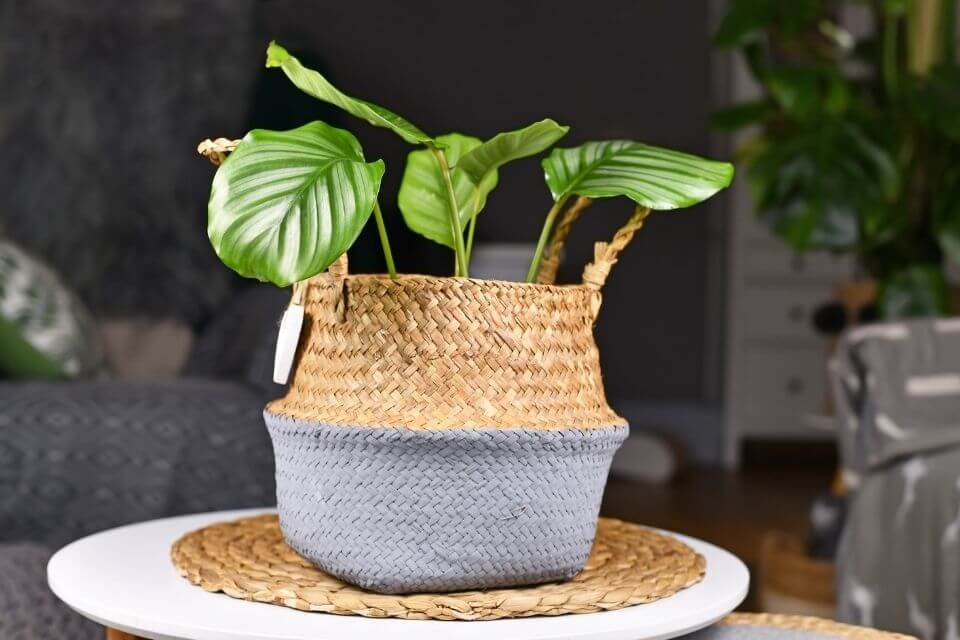
Calathea Orbifolia’s Insect Pest Problems
Thrips, in particular, may wreak havoc on your prized specimen. Brown and yellow spots appear on the leaves during an infestation, and the undersides of the leaves may appear wounded.
When treating them, alter the top two inches of the mix because their eggs are too small to view but can be placed in the soil. Predatory mites may be a viable alternative if sprays don’t work.
Please make a list of the pests that are consuming your plants and choose a mite species that prefer them. It is safe for pets and humans to come into contact with mites. Soil gnats are also attracted to the soil that is constantly wet.
Between waterings, simply let the soil dry out before re-watering. Pests are deterred by sprinkling a quarter-inch or so of sand on the surface, which dries quickly to keep them away.
It is also possible to use food-grade diatomaceous earth, a silica substance that kills larva and disrupts their life cycle, as another option.
Is Calathea Orbifolia Hard To Care For?
Calathea Orbifolia is a difficult plant to care for in the home or a closed environment. We would say it is a possible task if you put time into it to look after.
Preventing common care concerns requires perfecting the growing conditions. Here’s what to do if your Calathea is drooping and its leaves are discolored.
Does Calathea Orbifolia Need Sunlight?
Medium to low light conditions with partial shade is ideal for your Calathea Orbifolia. If you can read comfortably without straining your eyes, the light is appropriate. If the light is too bright, the leaves will begin to fade, and they may even die.
Though they can tolerate low light, Calatheas aren’t known as “dark-loving” plants. They’ll thrive on a windowsill with a north or east exposure. Make sure you’re not directly in front of the window in rooms that face south or west.
Many other varieties, like the Medallion and Ornate, thrive in light that is brilliant but diffused.
Is Calathea Orbifolia Good For Beginners?
If you have the correct guidance and care, you can appreciate the beauty of any type of Calathea. Calathea is prone to mood swings when it comes to being cared for.
Calathea care issues stem from over or under-watering and a lack of proper humidity or temperature.
If you pay attention to watering, humidity, and temperature levels, you may have attractive, green plants that will liven up your office and indoor areas.
Rooms such as lobbies or conference rooms with a fair amount of humidity and indirect sunshine are ideal for Calathea. Calathea can thrive in atriums as well.
Is Calathea Orbifolia Toxic To Pets Or Humans?
Calathea Orbifolia is safe for both humans and animals to consume. Of course, that doesn’t imply they’ll be a delicious salad, but the only harm they’re likely to cause is a rumbling tummy.
Does Calathea Orbifolia Plant Flowering?
Clusters of white flowers on the tips of the stems of Calathea Orbifolia are common in the natural world. The petals of the flowers are shaped like stars. To make a floral head, just a few bloom at a time.
Indoors, Orbifolia rarely blooms. The large, silvery-green leaves with dark veining patterns attract most people to these Calathea species.
What Cause Do Calathea Orbifolia Brown Edges?
Browning of Calathea Orbifolia leaves, whether in patches or around the edges, is most often caused by underwatering and low humidity. Occasionally, underwatering can cause long-term problems.
In Orbifolia soils, peat is a typical ingredient; however, when dried, it can actually repel water and leave the mix dry in some areas. Before watering, insert a wooden chopstick to check for leaks.
To check if the moistened mixture is evenly moist, remove a chopstick from it.
What Reason Do My Calathea Orbifolia Leaves Curling?
Check the soil and the local humidity to see whether there is a lack of moisture. If it’s too cold, the Orbifolia’s leaves will curl as well. Curled Calathea leaves can have various reasons and cures, such as high-temperature levels.
What Reason Does My Calathea Orbifolia Leave Turning Yellow?
Watering too much or too little is the most common cause of yellowing leaves on Calatheas. Nevertheless, if you are feeding Calathea an adequate water supply, temperature changes may be to blame.
To avoid fading foliage, keep the tropical indoor plant away from drafts or radiators.
What Causes My Calathea Orbifolia Drooping Leaves?
Repotting an Orbifolia can be a jarring experience for the plant, so expect a period of adjustment. Plants need a constant supply of water and a moderate amount of light, but not direct sunlight.
For immediate results, avoid replanting or reshaping the plant. Even a little neglect may go a long way for this plant if it gets enough light and water.
Takeaway
Calathea Orbifolia, like most Calatheas, is an excellent choice for a home or workplace. It shouldn’t be too difficult to keep healthy if it’s in a favorable location, such as a room with adequate light and humidity.
When you get the hang of it, propagation isn’t as difficult as you would think. With its small stature and ability to make any area feel more tropical, Orbifolia is an excellent choice for a corner plant.
If you follow these Calathea Orbifolia care guidelines, you should be able to care for your Calathea Orbifolia in no time.
Many other houseplants, such as Bromeliads, Ghost Plants, Paddy’s Wig, Spider Plants, Wax Plants, Moth Orchids, Polka-dot Plants, and Cast Iron Plants, can be used instead of Calatheas.
Unless you’re prepared to make your home safe for children and cats, don’t put dangerous plants in your home unless you’re willing to do it yourself.

